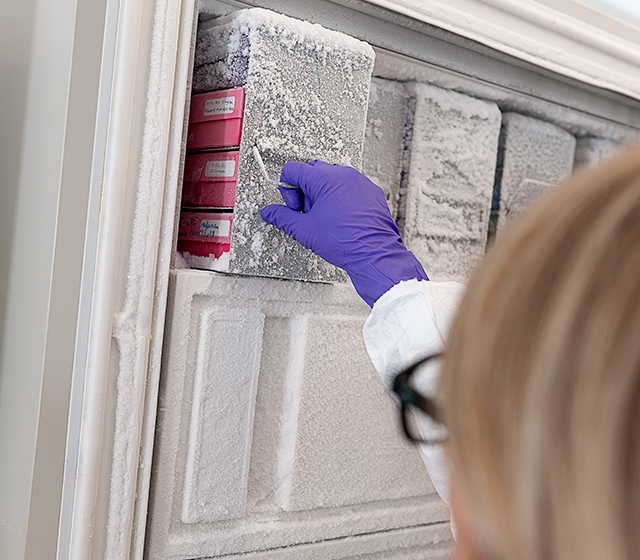Oligonucleotides
Reconstitution, Storage, Stability
Find here all the necessary information to reconstitute and store your oligonucleotides in optimal conditions.
How do I reconstitute my oligos?
Spin the tube briefly to collect the pellet at the bottom of the tube.
Add an appropriate volume of sterile TE buffer (10 mM Tris-HCl, 0.1-1 mM EDTA ; pH 7.5-8.0) or dH2O
- We recommend preparing a stock solution at 100 µM concentration which can be achieved by adding a volume (µl) of sterile TE buffer or dH2O, equal to ten times the number of nanomoles of sample present in the tube.
- For optimal long-term storage of fluorescent dye-labeled oligonucleotides, it is recommended that the oligonucleotides be resuspended in a slightly basic solution (i.e., sterile TE buffer at pH 8). Exception: Cy® dye-labelled oligonucleotides should be resuspended at pH 7.
- (si)RNA should be resuspended in RNase-free buffer to a convenient stock concentration (20 to 50 µM) and in small aliquots to avoid multiple freeze thaw cycles and contact with RNases.
- For PNA Telomer probes for FISH it is recommended to add formamide to the PNA-FISH probe tube. This stock solution of PNA probe can be diluted in PNA hybridization buffer to a final concentration of 200 nM.
Allow the tube to stand for a few minutes at room temperature, then vortex it for 15 seconds
- Please note that some oligonucleotides (i.e. milligram amounts or phosphorothioate oligonucleotides) are particularly difficult to resuspend and may require longer incubation times and/or thorough vortexing.
- Heating may also help to speed up the process.
Oligonucleotides with fluorescent dyes must be stored in the dark
How should I store my oligos?
Oligonucleotides have to be stored under adequate temperature condition according to their format and type.
The table here below lists the most appropriate conditions for optimal stability.
| Product | Format | Storage(1) | Stability(2) |
| Custom Oligonucleotides | Dried | RT | 18 months |
|---|---|---|---|
| TE buffer (pH 8) or dH20 | -20°C | 24 months | |
| Real-Time qPCR Probes | Dried | RT | 18 months |
| TE buffer (pH 8) or dH20 | -20°C | 24 months | |
| RNAi Oligonucleotides | Dried | RT | 18 months |
| RNAse-free buffer (pH 7.5) or dH20 | -20°C | 24 months | |
| Universal Primers | Dried | RT | 18 months |
| TE buffer (pH 8) or dH20 | -20°C | 24 months | |
| PNA FISH Probes / Custom PNA | Dried | RT | 18 months |
(1) Oligonucleotides and especially dye-labelled oligonucleotides should be protected from light for optimal stability. Tolerance -20°C ± 5° C. For custom PNA we suggest to prepare workable samples. Store these samples at 4°C for up to one month and the remaining at -20°C.
(2) Please note that depending on sequence and modifications, the stability of the oligos may vary substantially versus the given values, which should therefore be considered as indicative. Although it is generally recommended to avoid freeze-thaw cycles, we did not observe negative effects in qPCR tests after 10 freeze-thaw cycles.
How long do my oligos stay stable?
Our Quality Control department performs regularly stability studies on different type of oligonucleotides.
Each oligo is stored under different conditions and results are analyzed to provide to our customers the most accurate information regarding the stability of their products.

